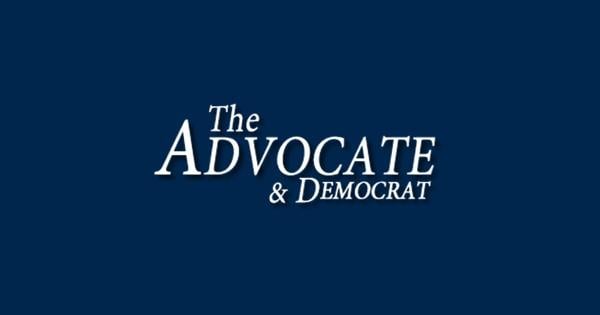Who Runs the Best U.S. Schools? It May Be the Defense Department.
The Defense Department operates high-achieving schools for military families and civilian employees. These schools, with 66,000 students, outscored the nation on federal exams, closing achievement gaps. They benefit from ample funding, integrated demographics, and centralized governance. Access to resources and teacher retention are high, reflecting the advantages of military life. While challenges remain, the schools' success highlights the impact of equitable resources and structured educational approaches.

Amy Dilmar, a middle-school principal in Georgia, is well aware of the many crises threatening American education. The lost learning that piled up during the coronavirus pandemic. The gaping inequalities by race and family income that have only gotten worse. A widening achievement gap between the highest- and lowest-performing students.
But she sees little of that at her school in Fort Moore, Ga.
The students who solve algebra equations and hone essays at Faith Middle School attend one of the highest-performing school systems in the country.
It is run not by a local school board or charter network, but by the Defense Department.
With about 66,000 students — more than the public school enrollment in Boston or Seattle — the Pentagon’s schools for children of military members and civilian employees quietly achieve results most educators can only dream of.
On the National Assessment of Educational Progress, a federal exam that is considered the gold standard for comparing states and large districts, the Defense Department’s schools outscored every jurisdiction in math and reading last year and managed to avoid widespread pandemic losses.
Their schools had the highest outcomes in the country for Black and Hispanic students, whose eighth-grade reading scores outpaced national averages for white students.
Eighth graders whose parents only graduated from high school — suggesting lower family incomes, on average — performed as well in reading as students nationally whose parents were college graduates.
The schools reopened relatively quickly during the pandemic, but last year’s results were no fluke.
While the achievement of U.S. students overall has stagnated over the last decade, the military’s schools have made gains on the national test since 2013. And even as the country’s lowest-performing students — in the bottom 25th percentile — have slipped further behind, the Defense Department’s lowest-performing students have improved in fourth-grade math and eighth-grade reading.
“If the Department of Defense schools were a state, we would all be traveling there to figure out what’s going on,” said Martin West, an education professor at Harvard who serves on the national exam’s governing board.
The schools are not free of problems.
Despite their high performance, Black and Hispanic students, on average, still trail their white peers at Defense Department schools, though the gap is smaller than in many states. The Pentagon has also faced scrutiny for its handling of student misconduct at its schools, including reports of sexual assault.
But as educators around the country are desperately trying to turn around pandemic losses, the Defense Department’s academic results show what is possible, even for students dealing with personal challenges. Military families move frequently and, at times, face economic instability.
How does the military do it? In large part by operating a school system that is insulated from many of the problems plaguing American education.
Defense Department schools are well-funded, socioeconomically and racially integrated, and have a centralized structure that is not subject to the whims of school boards or mayors.
There are about 50 U.S. schools for children who live on military bases and more than 100 schools internationally for students whose parents are stationed abroad, from Belgium to Bahrain.
Fort Moore, a major Army base formerly known as Fort Benning, sprawls across 182,000 acres on the Georgia-Alabama border. Roughly 1,900 students attend school on the base each day, while their parents practice shooting, parachuting and other training drills.
The schools — four elementary schools and one middle school — look a lot like regular public schools. Students arrive on yellow buses. Classrooms are brightly decorated with crayon drawings and maps of the United States. The sidewalk in front of Faith Middle School is painted with bear claws, a nod to the school’s mascot.
But there are key differences.
For starters, families have access to housing and health care through the military, and at least one parent has a job.
“Having as many of those basic needs met does help set the scene for learning to occur,” said Jessica Thorne, the principal at E.A. White Elementary, a school of about 350 students.
Her teachers are also well paid, supported by a Pentagon budget that allocates $3 billion to its schools each year, far more than comparably sized school districts. While much of the money goes toward the complicated logistics of operating schools internationally, the Defense Department estimates that it spends about $25,000 per student, on par with the highest-spending stateslike New York, and far more than states like Arizona, where spending per student is about $10,000 a year.
“I doubled my income,” said Heather Ryan, a White Elementary teacher. Starting her career in Florida, she said she made $31,900; after transferring to the military, she earned $65,000. With more years of experience, she now pulls in $88,000.
Competitive salaries — scaled to education and experience levels — help retain teachers at a time when many are leaving the profession. At White Elementary, teachers typically have 10 to 15 years of experience, Ms. Thorne said.
Even small details matter. A well-stocked supply closet means teachers do not have to pay for paper, pencils and other necessities themselves.
In some public school jobs, as Jan Ramirez, a first-grade teacher, put it, “we were the supply closet.”
Prudence Carter, a Brown University sociologist who studies educational inequality, said the Defense Department’s results showed what could happen when all students were given the resources of a typical middle-class child: housing, health care, food, quality teachers.
We aren’t even talking about wealth — whether they get to go to fancy summer camps,” Dr. Carter added. “We are talking about the basic, everyday things.”
Military life comes with its own hierarchies, with base pay ranging from $25,000 for an entry-level private, to six-figure salaries for experienced officers. At Fort Moore, higher-ranking officers live in white stucco houses, while enlisted soldiers are in modest duplexes. About a third of students on the base qualify for free or reduced lunch.
But the schools are more socioeconomically and racially integrated than many in America. Children of junior soldiers attend classes alongside the children of lieutenant colonels. They play in the same sports leagues after school.
That reflects a history dating back to 1948, when President Harry S. Truman ordered the military to desegregate its forces. In the years that followed, the military established integrated schools, primarily in the South, at a time when local public schools remained segregated.
Today, Defense Department schools are 42 percent white, 24 percent Hispanic, 10 percent Black, 6 percent Asian, and 15 percent multiracial.
"The military isn’t perfect — there is still racism in the military,” said Leslie Hinkson, a former Georgetown University sociologist who studied integration in Defense Department schools. But what is distinctive, she said, “is this access to resources in a way that isn’t racialized.”
Nationally, school-district boundaries are often drawn along lines of class and race, creating stark divides in resources. In 2021, nearly 40 percent of Black and Hispanic public school students attended a high-poverty school — a rate three to five times that of Asian and white students.
Defense Department schools are not immune to other conflicts, including charged debates over race, gender and identity.
But the schools are inherently less political — big decisions come from headquarters — and therefore less tumultuous.
Case in point: An academic overhaul that began in 2015 and has stuck ever since.
Defense officials attribute recent growth in test scores partly to the overhaul, which was meant to raise the level of rigor expected of students.
The changes shared similarities with the Common Core, a politically fraught reform movement that sought to align standards across states, with students reading more nonfiction and delving deeper into mathematical concepts. But unlike the Common Core, which was carried out haphazardly across the country, the Defense Department’s plan was orchestrated with, well, military precision.
Officials described a methodical rollout, one subject area at a time: New curriculum. Teacher training. Global coordination, so a fifth grader at Fort Moore learns similar material as a fifth grader in Kaiserslautern, Germany.
It took six years to finish carrying out the changes, longer than the average public school superintendent’s tenure.
Logistical planning, including a predictable budget, “isn’t very sexy,” but it is one key to success, said Thomas M. Brady, the director of Defense Department schools since 2014.
Such strict structure is something Cicely Abron, an eighth-grade math teacher, rarely experienced in nearly 20 years in public education.
At Faith Middle School, she cannot supplement curriculum and must work off an approved list. She receives detailed feedback from coaches and administrators who observe her class. Collaboration with other teachers is required and built into her weekly schedule.
The approach is meant to guard against what Dr. Dilmar, the school’s principal, calls “pockets of excellence” — a teacher who helps students soar in one classroom, while an instructor down the hall struggles.
Instead, the goal is to raise the floor for all students, something that Jason Dougal, president of the National Center on Education and the Economy, sees in top-performing countries like Finland and Singapore.
American school districts often have an “all-star team mentality,” Mr. Dougal said, relying on exceptional teachers and principals to get results.
But the most effective jurisdictions, he said, have a “systemic way of improving everybody on the team.”
What is Your Reaction?
 Like
0
Like
0
 Dislike
0
Dislike
0
 Love
0
Love
0
 Funny
0
Funny
0
 Angry
0
Angry
0
 Sad
0
Sad
0
 Wow
0
Wow
0










































































